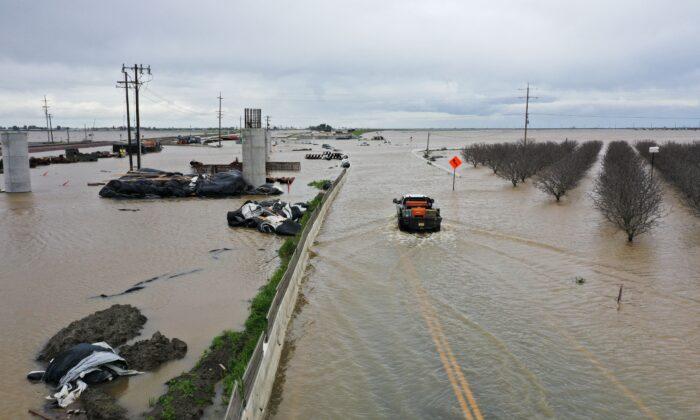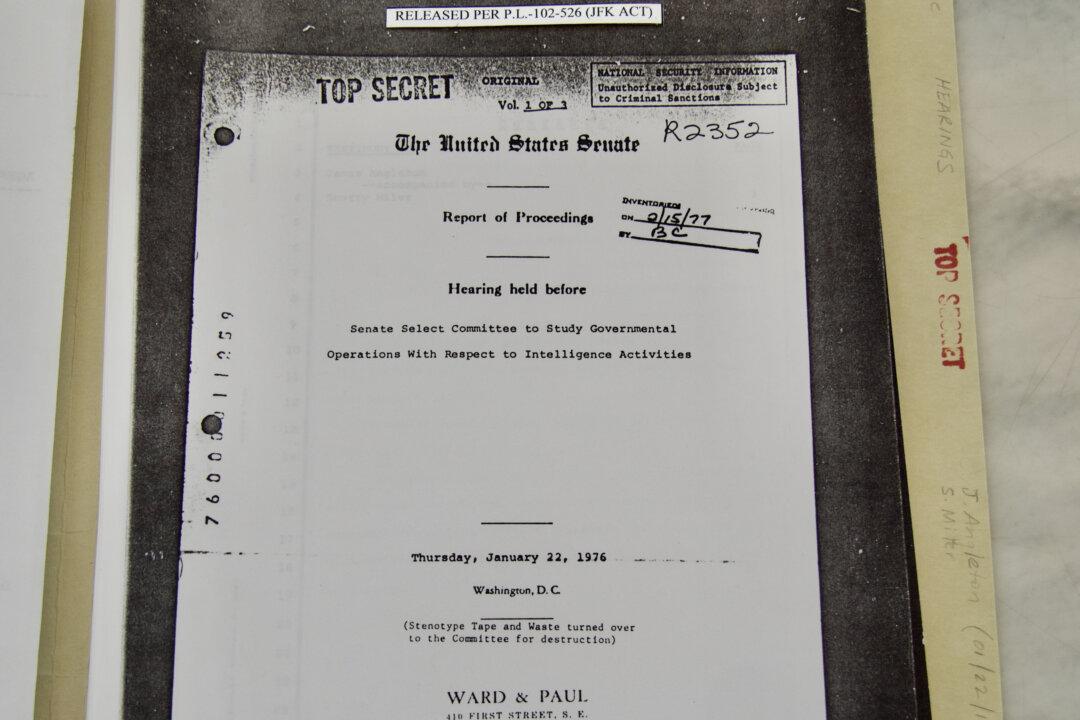In anticipation of wet weather approaching California, and amid preparations to protect communities from heavy rains, Gov. Gavin Newsom is distributing $95 million to fund flood-related projects across the state.
“As we head into another wet season, the state is moving quickly to shore up protections for at-risk communities, continue supporting impacted residents, and invest in the tools needed to meet the challenges of extreme weather across the state,” Mr. Newsom said in a press release Oct. 25 announcing the funding.
With $430 million allocated in the current 2023–24 fiscal year budget, Mr. Newsom said the $95 million will be used for flood preparedness projects and recovery efforts in communities at risk after record levels of flooding impacted the state this year.
Most—$67 million—will be spent repairing levees and restoring flood diversion projects overseen by the Department of Water Resources—the state agency tasked with regulating and managing water usage.
Additionally, wells impacted by flooding will receive $14 million for repairs.
More than $2 million is slated to repair damage that occurred to a University of California laboratory specializing in animal health and food safety in Tulare County, located in the Central Valley about 200 miles north of Los Angeles.
Additionally, funding will go toward training agencies at the county level with the hope of improving preparedness and coordination between emergency responders, while extra sandbags—2.4 million more than last year—will be purchased and distributed to minimize damage to communities.

A controversial element in the package includes $11.7 million in additional funding to supplement the state’s Storm Assistance for Immigrants project—established this year after persistent storms resulted in flooding across the state—with illegal immigrants impacted by floods eligible for $1,500 per adult and $500 per child up to $4,500 per household.
Some Golden State residents were not thrilled to learn that more tax dollars will be used to benefit non-citizens, while many families’ finances are tight due to high taxes, gas prices, and inflation.
“Why should my money go to someone who broke the law and is living in the country illegally?” Juan Garcia, a Bay Area construction worker and father of three, told The Epoch Times. “Those of us who work hard and follow the rules are paying for those that don’t, and it’s not fair.”
Others say the program—where money is typically distributed in gift cards through nonprofit groups, according to statements from the governor’s office earlier this year—is needed to help cover housing, food, and transportation costs for individuals that receive no support from the federal government when natural disasters occur.
“These families have nothing when tragedy strikes,” Amanda Williams, mother and Central Valley resident, told The Epoch Times. “They shouldn’t be invisible victims. They deserve our help.”
With meteorologists forecasting a wet winter season with El Niño conditions—known for warmer ocean temperatures and increased precipitation—expected to last through the winter more than seven million people in the state are at risk, with many unaware, according to a water resources department press release Oct. 23.
Residents are reminded that every county in the state has experienced a flood declaration over the last two decades, and all types of geography, from deserts and valleys to mountains and coasts, have been impacted.
“Climate extremes are creating more challenges for California, including increasing flood risk across the state,” Karla Nemeth, Department of Water Resources director, said in the agency’s press release. “Extreme drought and extreme flooding are both expected in the future, and California is responding with historic investments in projects that work with nature and collaborate with our Tribal, state, federal, and local partners to implement real solutions that protect communities.”







